 With her recently released second film, Stop-Loss, Kimberly Peirce has become one of the contemporary directors I most admire. For two main reasons. First is Peirce's fierce ambition, her acuity in tuning into a story that she feels needs to be told and her tenacity in finding the way that she can best tell it. Second is Peirce's profound capacity for empathy and respect. In the two Peirce films that I know, potential villains are abundant. Somehow, though, Peirce maintains a steady empathy for each of her characters; she may not endorse their actions but she does not judge their personhood. Instead, Peirce levies her -- and her film's -- fiercest critiques and clearest statements of blame toward the societal structures that give alibi to the least humane actions. I admire Peirce's work in narrative film for being political without being polemical, unflinching but rarely judgmental. It's the kind of storytelling that I usually gravitate to documentary for but I'm realizing that Peirce makes the harder choice: she chooses to work within genre. (Where Stop-Loss draws upon war-movie conventions, Boys Don't Cry operates within the frame of a romantic tragedy -- a tale of transcendant love doomed by the cruelties of circumstance.) Peirce's films don't provide answers; rather, her characters embody the challenging questions with which she wants her audience to wrestle. Peirce's smart, sophisticated filmmaking also often elicits astonishing, breakthrough work from her actors -- whether they know it or not. Such is the case with...
With her recently released second film, Stop-Loss, Kimberly Peirce has become one of the contemporary directors I most admire. For two main reasons. First is Peirce's fierce ambition, her acuity in tuning into a story that she feels needs to be told and her tenacity in finding the way that she can best tell it. Second is Peirce's profound capacity for empathy and respect. In the two Peirce films that I know, potential villains are abundant. Somehow, though, Peirce maintains a steady empathy for each of her characters; she may not endorse their actions but she does not judge their personhood. Instead, Peirce levies her -- and her film's -- fiercest critiques and clearest statements of blame toward the societal structures that give alibi to the least humane actions. I admire Peirce's work in narrative film for being political without being polemical, unflinching but rarely judgmental. It's the kind of storytelling that I usually gravitate to documentary for but I'm realizing that Peirce makes the harder choice: she chooses to work within genre. (Where Stop-Loss draws upon war-movie conventions, Boys Don't Cry operates within the frame of a romantic tragedy -- a tale of transcendant love doomed by the cruelties of circumstance.) Peirce's films don't provide answers; rather, her characters embody the challenging questions with which she wants her audience to wrestle. Peirce's smart, sophisticated filmmaking also often elicits astonishing, breakthrough work from her actors -- whether they know it or not. Such is the case with...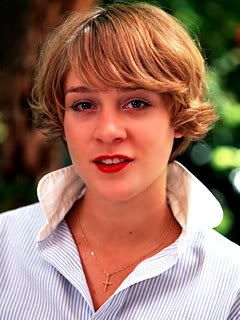
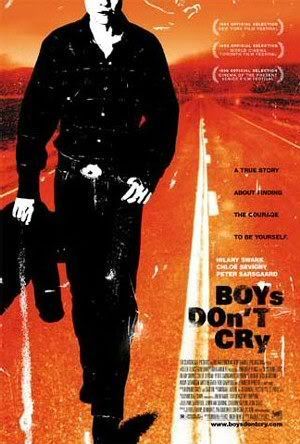
...Chloë Sevigny in Boys Don't Cry (1999)
approximately 45 minutes and 5 seconds
41 scenes
roughly 38% of film's total running time
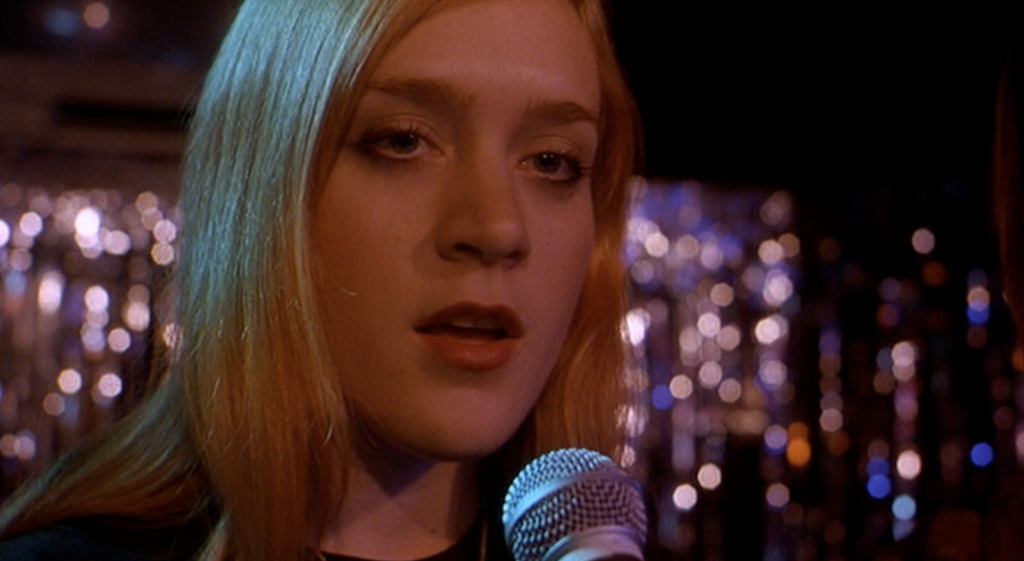 The romantic tragedy of Boys Don't Cry begins, as many such tales often do, when the boy sees the girl from across a crowded room.
The romantic tragedy of Boys Don't Cry begins, as many such tales often do, when the boy sees the girl from across a crowded room.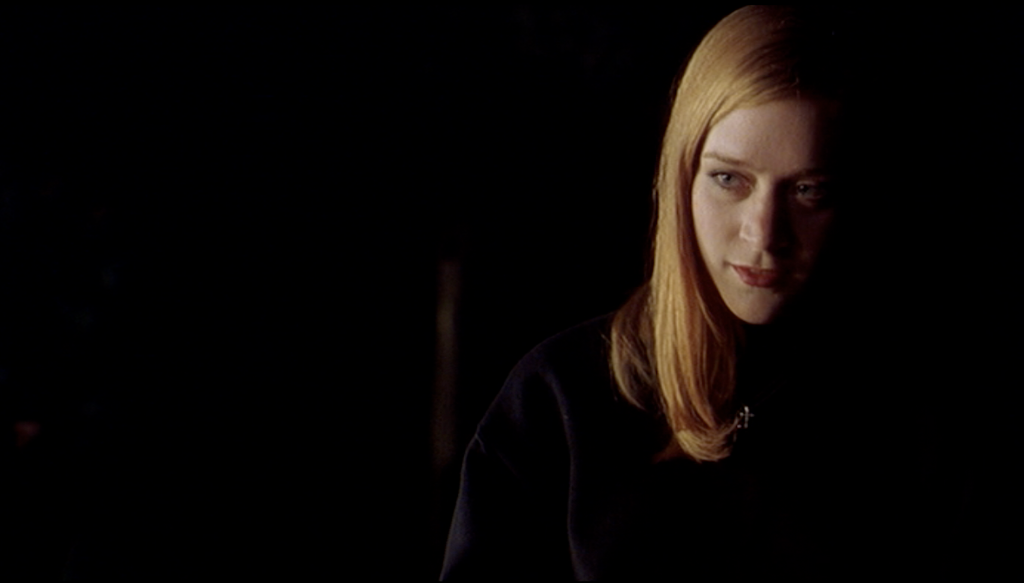 The boy, in this case, is Brandon Teena, a transman who finds himself in a small Nebraska town "passing" as male in ways that affirm and thrill his sense of himself. The girl is Chloë Sevigny's Lana, a not unpretty young woman who likes the reflection of herself she sees in Brandon's eyes.
The boy, in this case, is Brandon Teena, a transman who finds himself in a small Nebraska town "passing" as male in ways that affirm and thrill his sense of himself. The girl is Chloë Sevigny's Lana, a not unpretty young woman who likes the reflection of herself she sees in Brandon's eyes.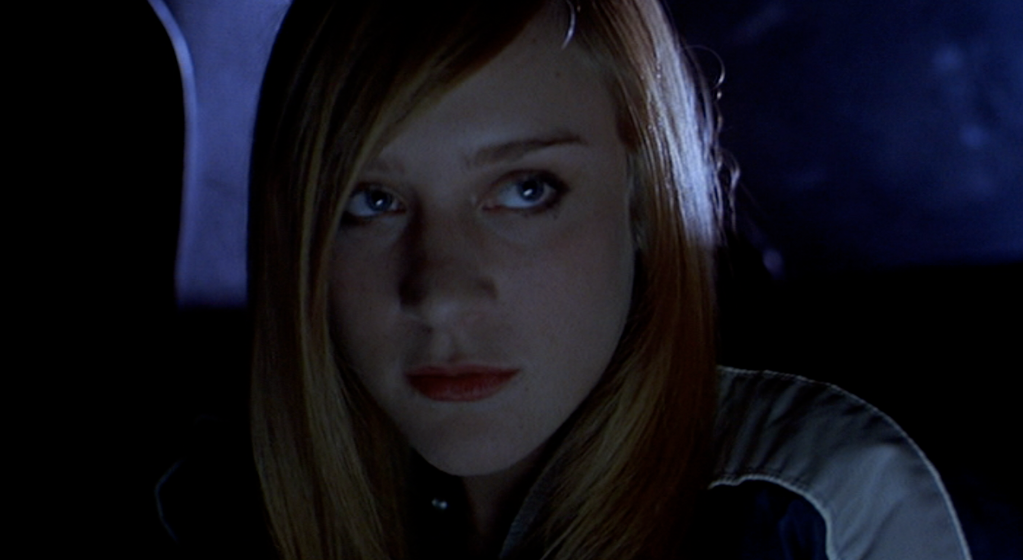 The film builds its central romance upon the charge of this mutual gaze. Brandon wants to be the kind of guy that a girl like Lana would find appealing. Meanwhile, Lana likes the ways she feels when Brandon looks at her.
The film builds its central romance upon the charge of this mutual gaze. Brandon wants to be the kind of guy that a girl like Lana would find appealing. Meanwhile, Lana likes the ways she feels when Brandon looks at her.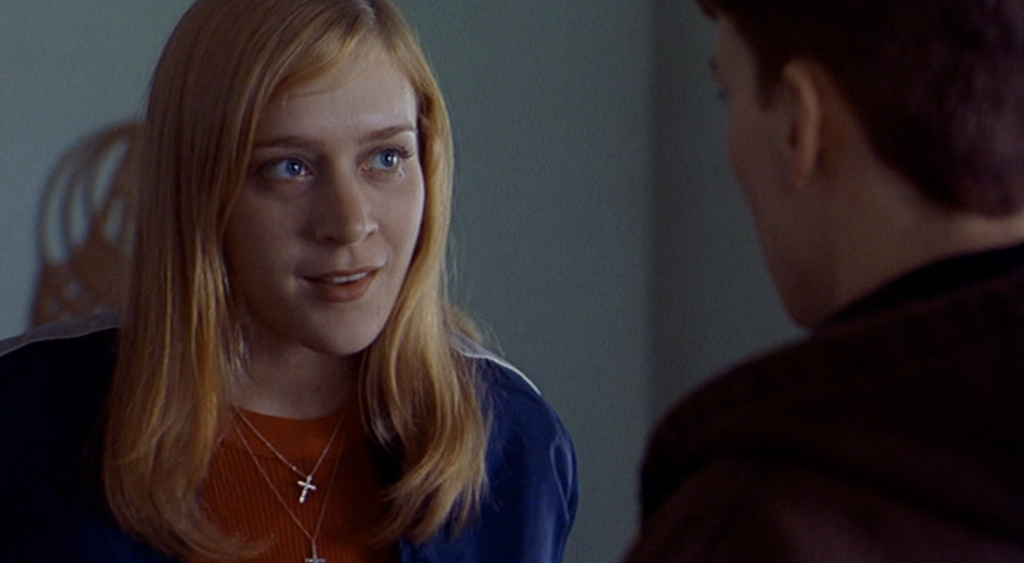 Sevigny builds Lana as the kind of girl who has, by necessity, become accustomed to masculine attention, both welcome and unwelcome. Sevigny shows how Lana has learned to maneuver the limited power provided by her status as a desired object. Sevigny's Lana wheedles drinks and smokes and praise from guys. Sevigny's Lana also seems to appreciate, and fear, the limits of this "power." She bridles and bristles under the watchful, predatory eye of John (Peter Sarsgaard in a thoughtfully but fearsomely sleazoid turn). But Sevigny's Lana is caught short by Brandon, about the subtle difference in Brandon's gaze. In short, Sevigny's Lana likes the way that Brandon looks at her and that, in turn, causes Lana to start to like Brandon.
Sevigny builds Lana as the kind of girl who has, by necessity, become accustomed to masculine attention, both welcome and unwelcome. Sevigny shows how Lana has learned to maneuver the limited power provided by her status as a desired object. Sevigny's Lana wheedles drinks and smokes and praise from guys. Sevigny's Lana also seems to appreciate, and fear, the limits of this "power." She bridles and bristles under the watchful, predatory eye of John (Peter Sarsgaard in a thoughtfully but fearsomely sleazoid turn). But Sevigny's Lana is caught short by Brandon, about the subtle difference in Brandon's gaze. In short, Sevigny's Lana likes the way that Brandon looks at her and that, in turn, causes Lana to start to like Brandon.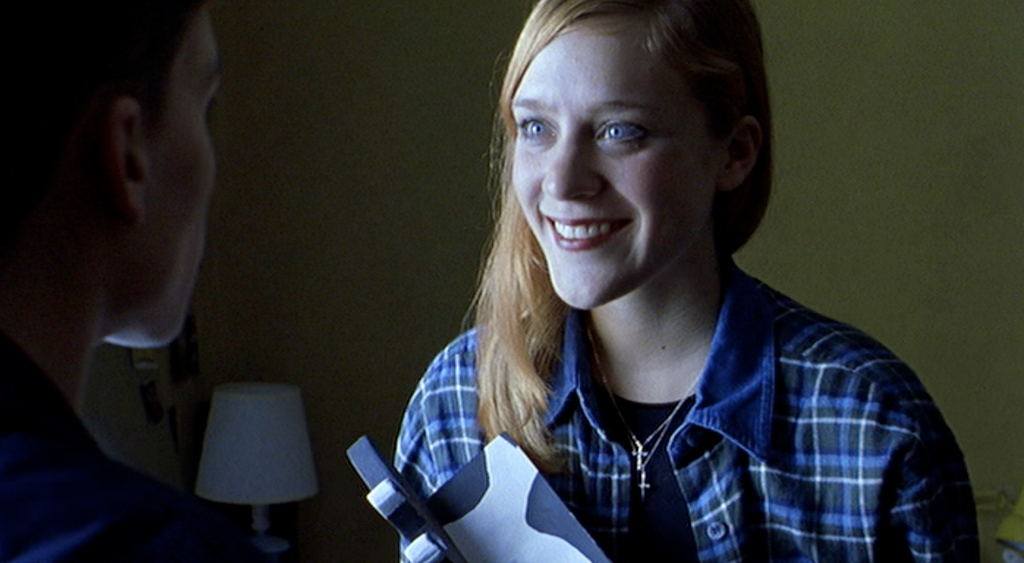 The charge of these mutually thrilling looks egg both Brandon and Lana to do things they might not otherwise do, adding to the thrill of the connection. As Brandon settles into the idea of living as a male in Lana's life, Lana's giddy at the thought that Brandon might be her key to additional new experiences -- of life and of herself.
The charge of these mutually thrilling looks egg both Brandon and Lana to do things they might not otherwise do, adding to the thrill of the connection. As Brandon settles into the idea of living as a male in Lana's life, Lana's giddy at the thought that Brandon might be her key to additional new experiences -- of life and of herself.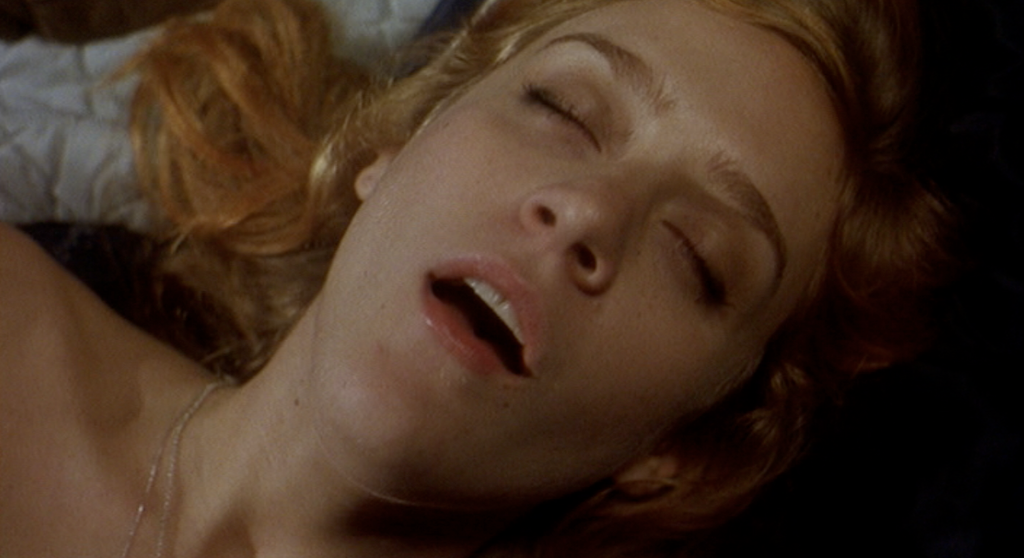 Brandon certainly introduces Lana into a new experience of erotic pleasure. In one of the film's pivotal sequences, Sevigny's Lana experiences (and then re-experiences, through the comforting refraction of erotic memory) on one of the more spectacular female orgasms ever depicted in a mainstream film. This sequence -- which Sevigny depicts without vanity -- makes physically literal the core metaphor of Brandon's appeal to Lana: he makes her feel things she's never felt before.
Brandon certainly introduces Lana into a new experience of erotic pleasure. In one of the film's pivotal sequences, Sevigny's Lana experiences (and then re-experiences, through the comforting refraction of erotic memory) on one of the more spectacular female orgasms ever depicted in a mainstream film. This sequence -- which Sevigny depicts without vanity -- makes physically literal the core metaphor of Brandon's appeal to Lana: he makes her feel things she's never felt before.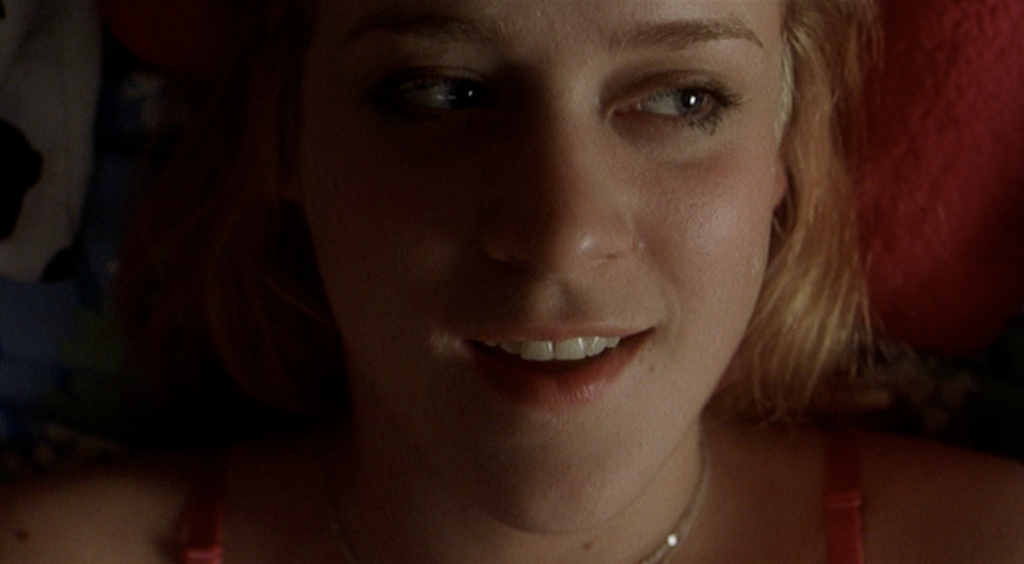 But it's precisely this newness of sensation that ultimately pitches the romantic reverie toward romantic tragedy. As Brandon's secrets and deceptions unfurl, Sevigny's Lana encounters a difficult challenge: should she trust what she knows? or what she feels?
But it's precisely this newness of sensation that ultimately pitches the romantic reverie toward romantic tragedy. As Brandon's secrets and deceptions unfurl, Sevigny's Lana encounters a difficult challenge: should she trust what she knows? or what she feels?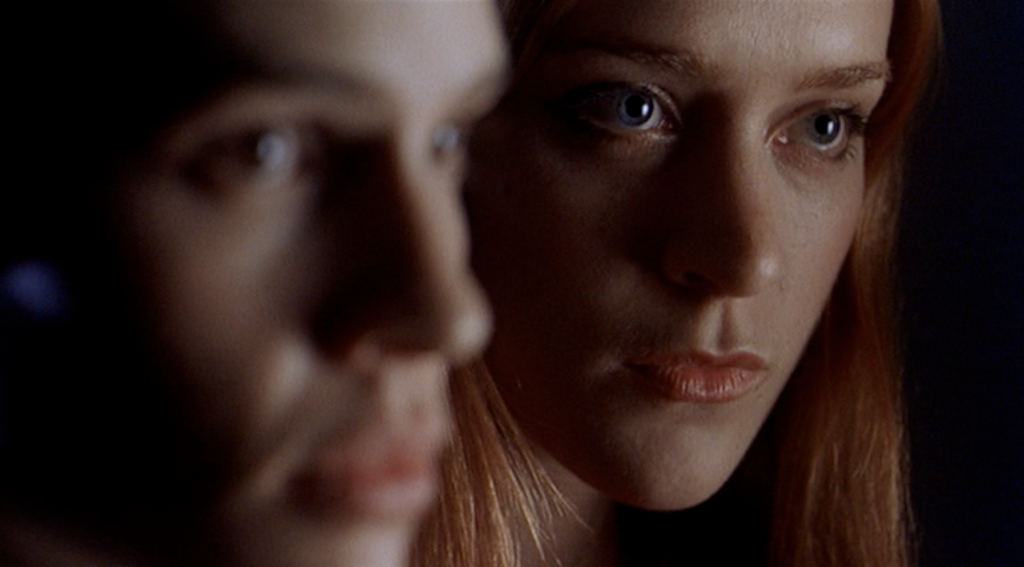 Swank's Brandon sees Lana as the embodiment of a lifelong dream fulfilled. In contrast, Sevigny's Lana discovers in Brandon a powerful fantasy she never knew she had, one that she's not yet entirely sure that she wants. This discrepancy -- Brandon finally realizing the selfhood he's long sought; Lana encountering entirely new dimensions to her experience of self -- rapidly becomes a chasm between the two lovers, with tragic results.
Swank's Brandon sees Lana as the embodiment of a lifelong dream fulfilled. In contrast, Sevigny's Lana discovers in Brandon a powerful fantasy she never knew she had, one that she's not yet entirely sure that she wants. This discrepancy -- Brandon finally realizing the selfhood he's long sought; Lana encountering entirely new dimensions to her experience of self -- rapidly becomes a chasm between the two lovers, with tragic results.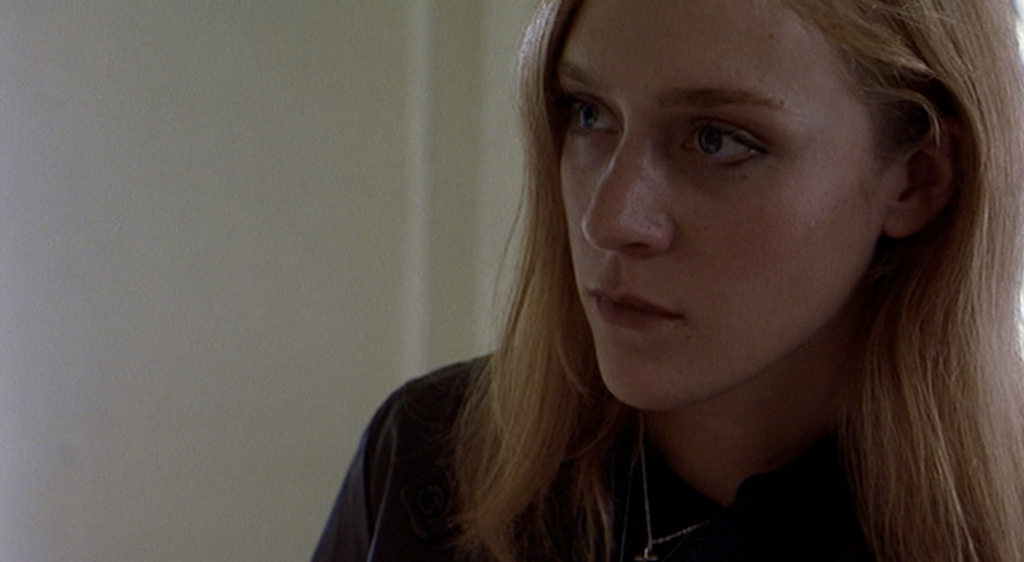 The historical circumstances of the true life story present a particular challenge to both Sevigny and Peirce. In death, Brandon became an icon; in life, Lana remains an enigma. Brandon's story hurtles in a doomed trajectory; Lana's feints and weaves with ambiguity and contradiction.
The historical circumstances of the true life story present a particular challenge to both Sevigny and Peirce. In death, Brandon became an icon; in life, Lana remains an enigma. Brandon's story hurtles in a doomed trajectory; Lana's feints and weaves with ambiguity and contradiction. Sevigny's Lana is almost a different person from scene to scene, her fragmented malleability a stark contrast to Brandon's quickening clarity. For her part as an actress, Sevigny contributes a vivid commitment to each scene, permitting each glimpse of Lana to be as distinct as the next. Peirce utilizes this aspect of Sevigny's performance well as one plausible explanation for the events and circumstances depicted in the film. Yet, even as the actress digs deep to make each moment as human and real as possible, I'm not convinced that Sevigny tethers these moments to a core for the character that remains legible from scene to scene.
Sevigny's Lana is almost a different person from scene to scene, her fragmented malleability a stark contrast to Brandon's quickening clarity. For her part as an actress, Sevigny contributes a vivid commitment to each scene, permitting each glimpse of Lana to be as distinct as the next. Peirce utilizes this aspect of Sevigny's performance well as one plausible explanation for the events and circumstances depicted in the film. Yet, even as the actress digs deep to make each moment as human and real as possible, I'm not convinced that Sevigny tethers these moments to a core for the character that remains legible from scene to scene.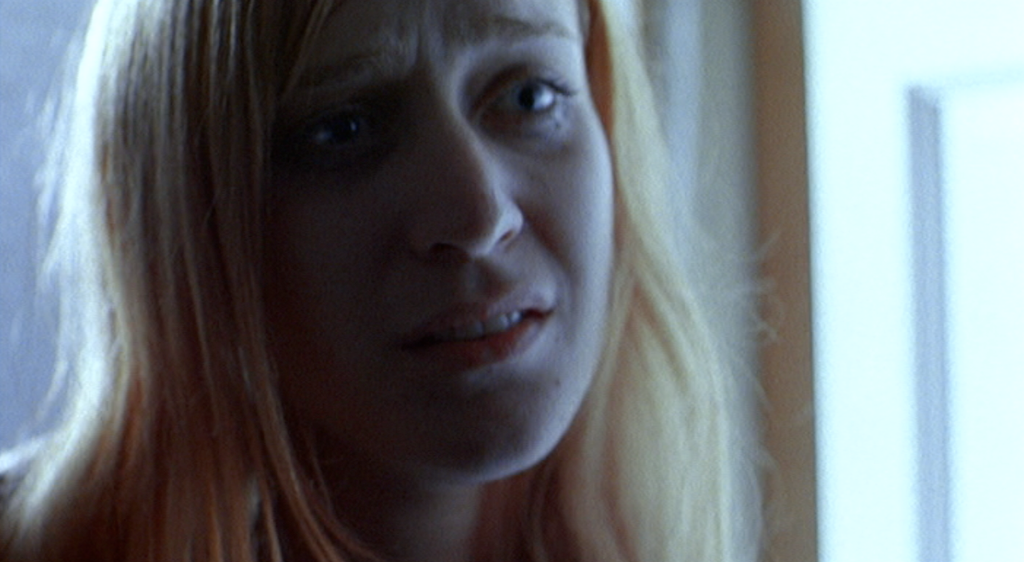 Thus, I end up feeling that, while Sevigny's often excellent "in the moment," I remain unconvinced that she's as excellent "in the character." A hazard of the role, perhaps, but one that's as much an opportunity as a burden for an actress at the edges.
Thus, I end up feeling that, while Sevigny's often excellent "in the moment," I remain unconvinced that she's as excellent "in the character." A hazard of the role, perhaps, but one that's as much an opportunity as a burden for an actress at the edges.

3 comments:
For me, the mercuriality of the performance was part of the appeal. I liked the performance a lot - the only scene that felt really incongruous was the orgasm scene (which you loved) - it felt a little too 'porn' for the realism that Pierce was striving for. Whether that was accidental or Sevigny was purposefully creating something of a femme fatale out of Lana remains unclear to me.
Can't wait for Lesley Manville's profile when and if it comes!
I haven't seen this film (ducks!) but wholly agreed with your comments about Stop/Loss. While there's nothing wrong with taking your time, let's hope it doesn't take KP eight years to make another film.
I agree with this whole heartedly. Although nothing could make me think anyone else deserved the statue but Colette
Post a Comment